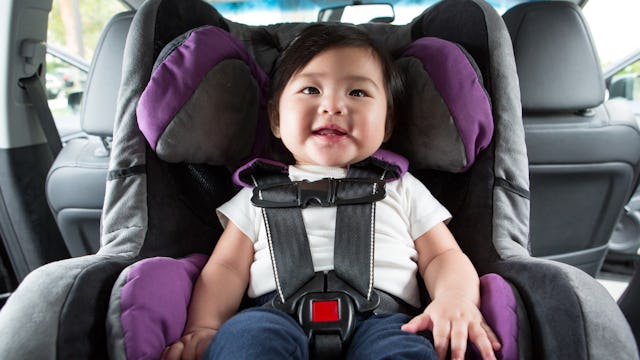Pediatricians Issue New Car Seat Guidelines: Size Matters Over Age

New car seat guidelines say child’s height and weight, not their age, that should determine when to forward-face
The American Academy of Pediatrics has issued new car seat guidelines. Their official stance is that babies should remain rear-facing “as long as possible,” until they reach the maximum height and weight allowed by the car seat manufacturer. This differs from their previous recommendations based on age.
The updated car seat guidelines are a pretty big change from their previous stance because this means some children should remain rear-facing even after turning two. The decision to update the recommendations is based on new research on car safety for children.
“The last time this policy was reevaluated there had not been a lot of new data,” Dr. Ben Hoffman, chairperson for the AAP’s council on injury, violence and poison protection, tells NBC News. “But in the last year, there has been a significant change in what we know about the relative protection of car seats.”
The new guidelines for all children and car seats are as follows:
- Children should ride in a rear-facing car safety seat as long as possible, up to the limits of their car safety seat. This will include virtually all children under 2 years of age and most children up to age four.
- Once they have been turned around, children should remain in a forward-facing car safety seat up to that seat’s weight and length limits. Most seats can accommodate children up to 60 pounds or more.
- When they exceed these limits, child passengers should ride in a belt-positioning booster seat until they can use a seat belt that fits correctly.
- Once they exceed the booster limits and are large enough to use the vehicle seat belt alone, they should always use a lap and shoulder belt.
- All children younger than 13 years should be restrained in the rear seats of vehicles for optimal protection.
AAP reviews their policies every three years and makes adjustments based on the most recent findings. A recent study from Ohio State University found that rear-facing car seats, when properly installed, protect children under two the most in rear-impact collisions.
“Even though the child is facing the direction of the impact, it doesn’t mean that a rear-facing car seat isn’t going to do its job,” says Julie Mansfield lead author of the Ohio State study. “It still has lots of different features and mechanisms to absorb that crash energy and protect the child. The rear-facing seat is able to support the child’s head, neck and spine and keep those really vulnerable body regions well protected.”
The AAP’s new guidelines are clear: parents should delay transitions from rear-facing car seats (of all types) as long as possible based on the child’s size — not their age — because rear-facing is safer.
This article was originally published on